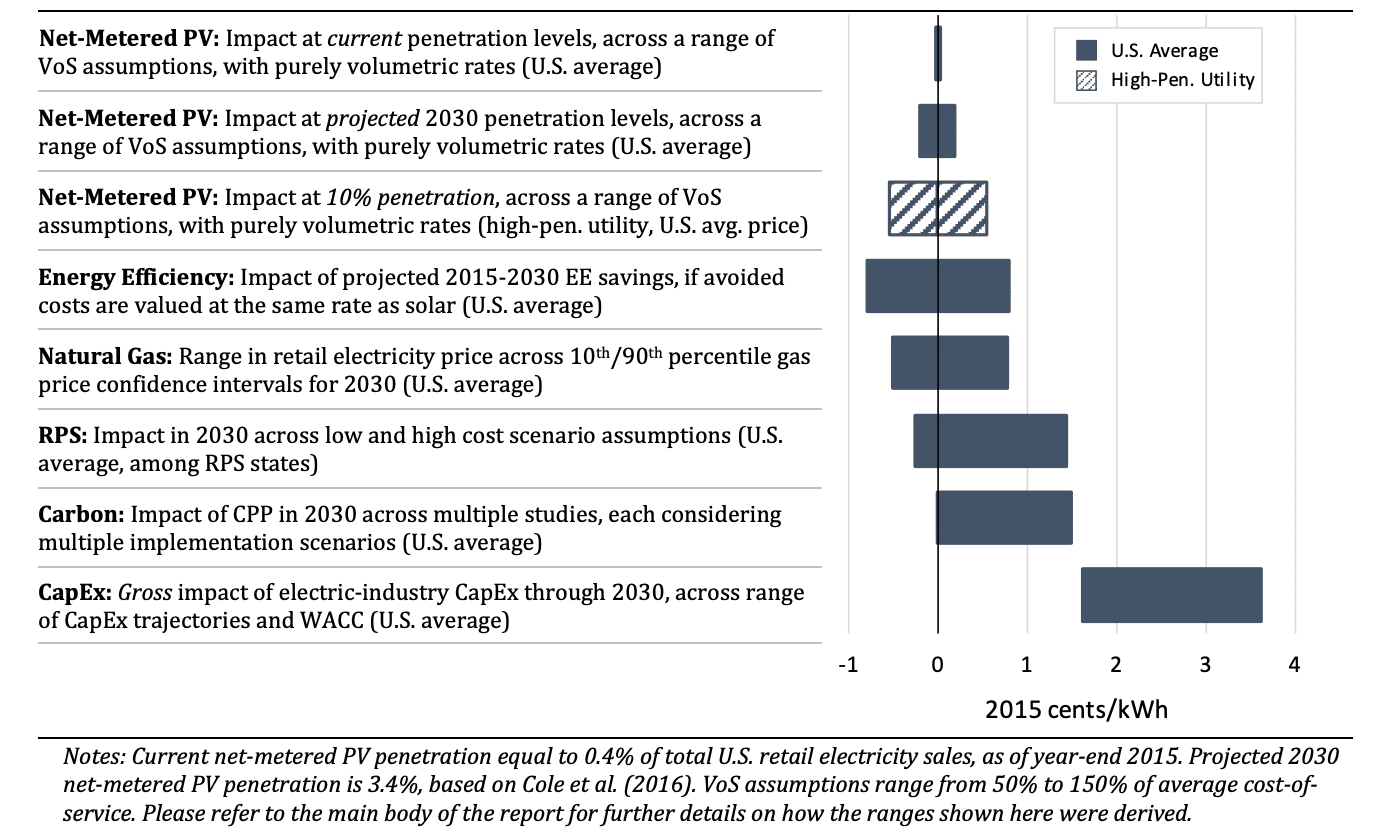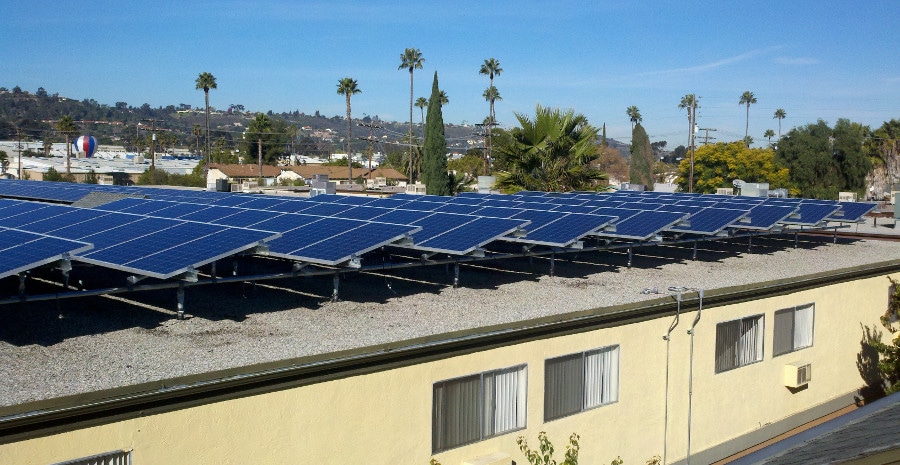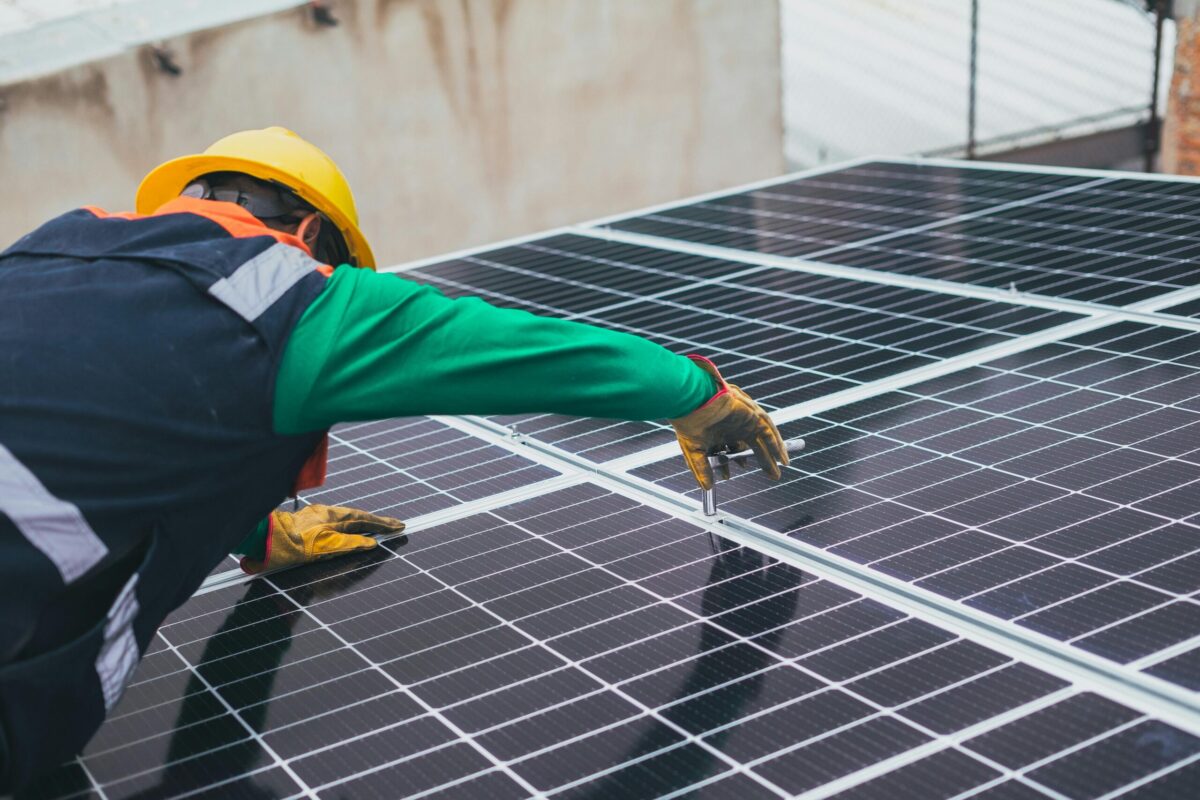Customers of San Diego Gas and electric (SDG&E) could soon see a drastic increase in their monthly electric bills, as the utility has submitted to state regulators a proposal to raise the monthly minimum utility charge from $10 to $38.
The California Public Utilities Commission, is expected to make a decision on the proposal by spring of 2020.
In defense of the nearly 4x increase, SDG&E is arguing that the minimum bill increase is necessary in order to “ensure that all customers pay for their minimum threshold of service provided by SDG&E, even if they are departing load or DER customers.”
What the above quote shows is that SDG&E is employing the popular rhetoric that penetration of distributed solar customers onto the grid is raising overall service costs for the utility by virtue of these customers being able to profit off of their installations. This cuts into the utility’s overall profit, which is no bueno for said utility.
However this argument made, the existence of a “cost shift” from solar system owners to other utility customers, while common is not one made with the luxury of factual support. In fact, Lawrence Berkeley National Lab (LBNL) has looked at the overall potential rate impact of distributed solar under a variety of valuations, and has compared this to other rate impacts.
Putting the Potential Rate Impacts of Distributed Solar into Context finds that:
In most cases, the effects of distributed solar on retail electricity prices are, and will continue to be, quite small compared to many other issues.
So just how small are these effects? Well for starters, they’re just as well likely positives as negatives. At current national penetration levels, the report finds that distributed solar would bring no more than a .03 cent per kilowatt-hour ($0.0003/kWh) long-run increase in retail utility prices, but that the result could just as well be a decrease of the same magnitude.

But the state in question is California, with much higher residential PV penetration levels than the rest of the country. Well, the report adjusted for high penetrations levels too, finding that even if distributed solar were to represent 10% of total electricity sales, the impacts would be either a cost or a benefit of around half a U.S. cent per kilowatt-hour ($0.005/kWh). Meanwhile, energy efficiency measures are likely to have an impact of around $0.008/kWh, which could be a cost or a benefit.
In light of these figures and the proposed minimum bill increase, SDG&E has come under fire by those who see this proposal as a direct attack on distributed solar. One of the opponents of the bill increase is NeoVolta battery storage company CEO Brent Wilson, who said:
This is just another example of a big investor-owned utility trying to undermine solar. This notion that solar customers are somehow shifting the financial burden to non-solar customers is one of their favorite myths.
For now, the future of SDG&E ratepayers hangs in the balance, however it is a balance that can be influenced, as the California Public Utilities Commission is accepting comments on the proposal.
This content is protected by copyright and may not be reused. If you want to cooperate with us and would like to reuse some of our content, please contact: editors@pv-magazine.com.









This is interesting. In fact, $38 per month was the amount we paid PG&E during the year (2016) BEFORE we installed 10 solar panels on our home in Santa Rosa CA. That was in addition to $25 per month we paid to Sonoma Clean Power (SCP) during 2016 for electrical power delivered to us by PG&E. We’re currently paying PG&E $10 per month for delivery and SCP $4 per month for power. If SDG&E gets this 4x rate increase approved, I have no doubt that PG&E will be right behind them.
SDGE CEO Debrorah Reed had a total compensation of about $12 million last year https://www.sdge.com/sites/default/files/regulatory/2017_REDACTED_SDGE_GO-77.pdf
they operate about 1.4 million electric meters, which comes out to her personal compensation of about about $.75/mo per customer.
It would be nice if the CPUC found that the minimum rate should actually decrease to $5/month…
Or separate transmission into another entity.
I feel this is in keeping with the industry policy of telling me to conserve, and then raising my cost because they are not making enough profit!
… or punishing those who were already conserving because they can’t find new ways to save energy.
… or punishing those who are in an upstairs, west-end unit of a condo or apartment complex, because they use more energy.
… or shutting down the only substantial power generating station they own and raising ratepayers’ rates to pay for the shutdown.
The list goes on. California ratepayers deserve locally owned, co-op utilities, not for-profit corporations milking them of every penny they can get.
Exactly!!! Could not agree more with the vast opinions on this blog.
This nightmare began when “restructuring”/deregulation of the utility industry shoved AB 1890 down our throats. The “Calif. energy crisis”
initially was downplayed as having Nothing to do w/deregulation or Enron. When Enron imploded and the truth came out, then Industry wanted us to believe the “Bad Apple” theory.Well Enron was a major player, but it was more like Enron bringing the “rancid orchard” ie “The Markents” that has and continues to be the problem. Then as usual, the “Calif. problem ” is exacerbated nation wide w/the repeal of PUHCA.
Game over. We are not powerless though, because of the “uniqueness” of the physics of this “commodity”—–“spontaneous brownouts” should be very worrisome to the IOUs and the rest of Market Participants. Don’t even get me started on the “Virtual” supply/demand Marketers.
What?! SDG&E demanding more money?! Say it isn’t so! Punishing solar owners, as usual (shifting on peak times to when solar is less effective).
This reflects the fact that SDG&E thinks it is owed something: a customer. When that customer flips from being a customer to being a supplier, no matter how good a deal SDG&E is getting from that supplier, SDG&E looks at it solely as the loss of a customer, and feels they are “owed” something. Their bogus economic argument follows from that premise.
They’re already paying wholesale rates when solar customers generate more power than they spend, and I’m betting that the wholesale rate is only for the generation, not for distribution. So SDGE is already making a profit off of solar customers. Asking them to pay more for their connection to the grid makes no sense to me.
This only makes it more profitable to go off grid as $500/yr is $10k savings over 20 yrs just on the monthly charge.
5kw of solar, 10kwh of battery and a RE fueled generator or CHP could be had for that.
Making the kwh of the bill pure savings.
This will cause a lot of microgrid sharing 1 grid tie, mostly to sell on demand power.
On solar there is cut peak demand so much it pushed it into the evening has to be very valuable to a 100% RE grid especially.
The only thing is solar cuts utility demand, pollution but that is the thing about being public utility, it is for the public good.
If demand shrinks they are obligated to shrink, not keep customers from making their own power.
But 2 can ply that game now DG RE costs much less than utility power with ROIs of 50%/yr, utilities really are not that needed if they don’t want to play fair.
And IOUs are very easy to bankrupt as so much debt on stranded assets.
If I was San Diego, I’d just say goodbye to SDG+P and start their own muni like SF is likely to do.
I’ve had solar panels since 2011. They have NEVER generated enough electricity for SDG&E to pay me! Solar power was supposed to be environmentally friendly and very beneficial. Now, we are to be punished for buying the expensive panels!!! I must choose a plan by September 7, or SDG&E will choose it for me.
SDG&E is now pushing ‘variable’ TOU rate plans. The utilities say, solar PV adopters push power back onto the grid during peak generation times of the day creating a “duck curve”, basically a suppression of grid power need during the 10 to 2 PM solar PV peak generation time of day. SDG&E, SCE and PG&E says the duck curve creates the “need” for a time of use or TOU electricity pricing spike to service the grid and it looks like SDG&E has determined it is from 4PM to 9PM just when solar PV tails off for the day and into the early evening.
Your gambit of the utility’s ‘pundit’ is to install a smart energy storage system to store the majority of your energy generation from the solar PV panels during the day and use this energy during the TOU period to avoid the utility’s TOU price spiking. After 9 PM use the arbitrage function of the ESS to store super off peak energy for the early morning wake up energy use time of day around 5 AM to 9AM before the solar PV system makes good power. Basically you want your say 2,000 square foot home to look like a 500 square foot bungalow to SDG&E.
If they pass this I’ll be installing a battery system and going off grid entirely. Blatant attack on rooftop solar owners for using less of their product.
Would the utility still be able to go after you, though?
Are there local regulations about buildings having to be connected to electric utility, even if you end up using none of their power?
Would the utility then charge you their (increased) base fee to make sure they get money from you?
The folks in the San Diego area that are within the ocean cooling zone, might be able to actually reduce the need for the grid to zero most of the time and still be connected to the grid as a “backup” system just in case your solar PV with energy storage has a problem. Those who live farther inland will probably struggle with air conditioning costs during the summer months. On average the energy star air conditioning systems today are around 1.3 kWh per ton of heating or cooling. A 5 ton unit in a hot area running 24/7 to keep the home comfortable would be 8.45kWh, for 24 hours would be almost 203kWh for air conditioning alone. If you’re using lithium ion energy storage, then the ESS will require a discharge of no more than 80%, so you would have to upsize the battery pack for longevity to about 255kWh and would require a solar PV array of right at 45kWh peak. Air conditioning is an energy hog. IF the energy storage system is at $200/kWh, you’re looking at $51K for energy storage for one day of power.
Recommendation, add a smart ESS to your current system, use the arbitrage algorithm to use super off peak power to charge the battery for early morning use and save as much of the solar PV generation for the TOU electricity price spiking every evening.
“Customers of San Diego Gas and electric (SDG&E) could soon see a drastic increase in their monthly electric bills, as the utility has submitted to state regulators a proposal to raise the monthly minimum utility charge from $10 to $38.”
It would also go a long way to justifying the $38 IF SDG&E, PG&E, SCE had some value adder for the ratepayers, other than subsidizing an inefficient business model. Several GW of energy storage will be needed when both SONGS and Diablo Canyon are offline. The decommissioning will cost ALL more per kWh for the power they no longer get from these plants. With CAISO ‘curtailing’ solar PV and wind during the “duck curve” then, purchasing power on the spot market to make up any shortage due to the ‘curtailment’. It’s so stupid, that there have been days when California has more solar PV and wind generation online that power has actually been ‘dumped’ to other States at negative prices per MWh. So, it’s now “better” to curtail non-fueled generation and buy fueled generation on the spot marketplace at premium prices to pass along to the ratepayers. Brilliant business model. The CPUC seems stacked towards the utilities, perhaps the CPUC will see as in Arizona, the ‘fee’ isn’t worth a $28 increase, but maybe a $4 increase? Typical Union bargaining tactic. Ask for two, three, four times more and maybe you’ll get half to a quarter as the actual increase.
I’m so tired of this, this is why we started doing so many off grid packages for our customers. I’m so tired of this nonsense. Just get off the grid and stop paying them and ignore their threatening notices of disconnecting the power.
This kind of nonsense just drives me up the wall, no business is “entitled” to a profit for not doing anything. They just use politics to try and force consumers to give them more money that they are not even earning.
Today I meet with SDGE because our enormous solar true up bill. $1,800 over last year’s tru up bill. So if they think we?solar customers) aren’t paying enough this legislation will add another $320 to that bill. Is anyone else bother by the fact that utilities can’t see what you are producing, and only what they providing and solar companies can see what you are using and only what your panels provide. This should be changed so the end consumer doesn’t have to add it all up to see how much actual energy they use. I’m also looking for a solar/sdge advocate if anyone is out there.
Come on… you tell us we can file comments with CPUC but don’t include a working link, case number, etc!? Bad reporting.
The case number is A.17-12-013, however I couldn’t find where comment submission was located, though there are a litany of places on the CPUC website to file a complaint.
Thank you Tim for the case number.
You complain about IOUs making a profit. Yet you want PV solar business to earn a profit. Why the inconsistency? No profits means no taxes, no taxes means no government programs. IOUs have a guaranteed profit because they are force by the CPUC to provide electricity to everyone, regardless of expense. And it’s there and available to anyone with a phone call. What is so wrong with charging people their fair share of making their infrastructure available to them? Sounds to me like solar companies are wanting more government-backed regulations to support their shaky business model.
Malarchy!!!! If I didn’t feel like I was being gouged I might not have paid for solar to just stick it to the man but looks like I’m gonna get poked back. Rrrrrrr. Looks like I’ll be looking into battery backups.
For all those talking about batteries to stick it to SDG&E, my understanding is the minimum utility charge of $10 to $38 means even if you pull in 0 kWh from the grid in a month, SDG&E will still charge you $38 for being connected and this cannot be refunded during the true-up by excess solar production.
Correct me if I am wrong…
Here is a link to the page to submit public comments to the cpuc regarding the fixed rate increase:
https://apps.cpuc.ca.gov/apex/f?p=401:65:0::NO